
-
Find the right food for your petTake this quiz to see which food may be the best for your furry friend.Find the right food for your petTake this quiz to see which food may be the best for your furry friend.Featured products
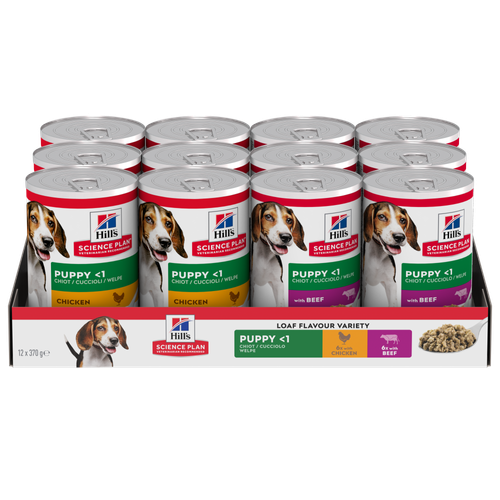 Puppy Food
Puppy FoodHill's Science Plan Puppy Multipack Wet Dog Food with Chicken & Beef are complete premium pet foods for growing puppies from weaning until 1 year old and for pregnant and nursing dogs. Your puppy will love these deliciously smooth and savoury minced loaves, formulated for balanced nutrition and overall health.
Shop Now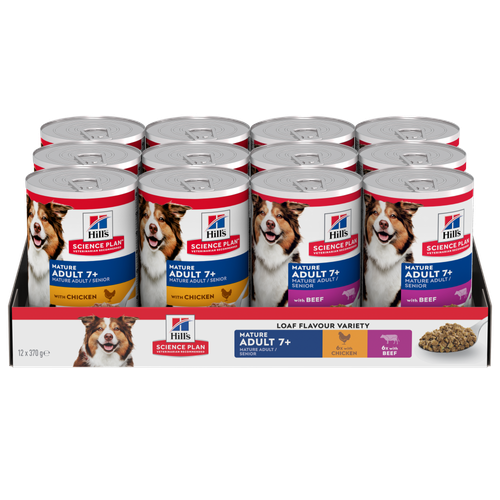 Mature Adult Dog Food
Mature Adult Dog FoodHill's Science Plan Mature Adult Multipack Wet Dog Food with Chicken & Beef are complete premium pet foods for mature adult dogs from 7 years. Your dog will love these deliciously smooth and savoury minced loaves, formulated to deliver the appropriate amount of energy to support the needs of adult dogs.
Shop Now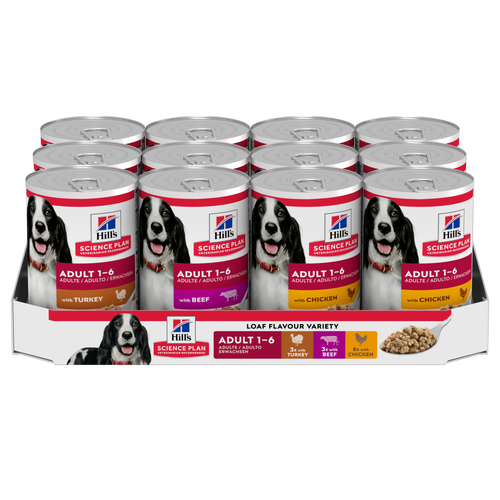 Adult Wet Dog Food with Beef
Adult Wet Dog Food with BeefHill's Science Plan Adult Multipack Wet Dog Food with Chicken, Beef & Turkey are complete premium pet foods for adult dogs from 1 year. Your dog will love these deliciously smooth and savoury minced loaves, formulated for balanced nutrition and overall health.
Shop NowFeatured products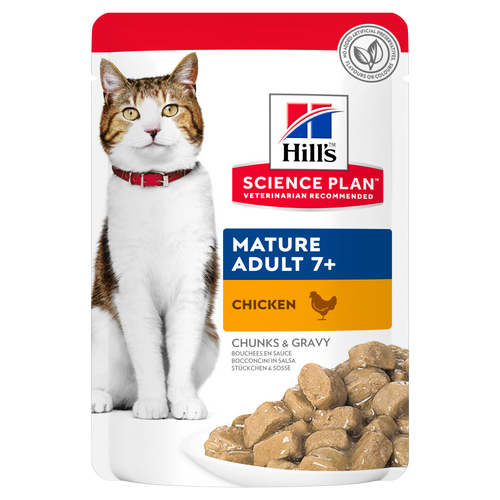 Mature Adult Wet Cat Food with Chicken
Mature Adult Wet Cat Food with Chicken
Tender chicken chunks in gravy for mature adult cats. Made with easy-to-digest ingredients, high-quality protein for lean muscle maintenance and antioxidant vitamins C+E for optimal health.
Shop Now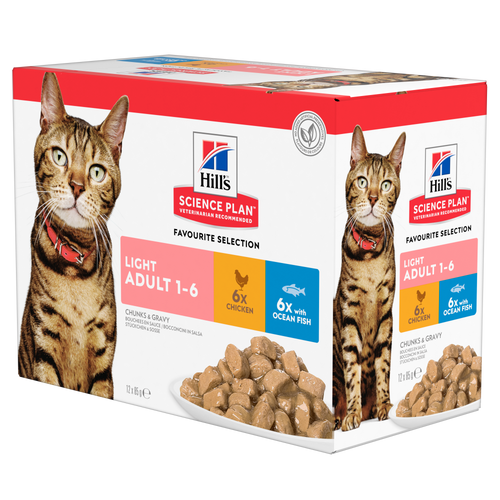 Light Adult Multipack Wet Cat Food with Chicken & Ocean Fish
Light Adult Multipack Wet Cat Food with Chicken & Ocean FishTender chicken chunks in gravy for cats, with L-carnitine and fewer calories for ideal weight management. Packed with high-quality protein, omega-6s, and vitamin E for shiny fur and healthy skin.
Shop Now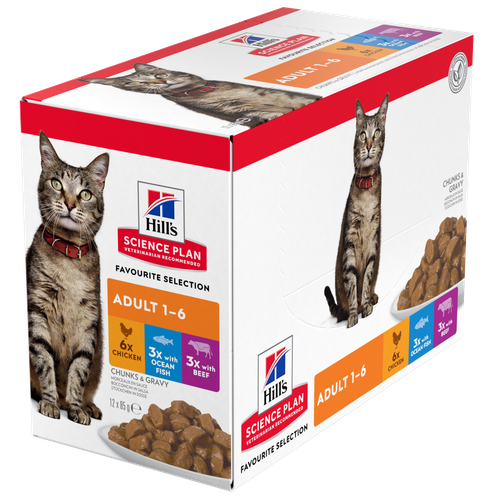 Adult Multipack Wet Cat Food with Beef, Ocean Fish & Chicken
Adult Multipack Wet Cat Food with Beef, Ocean Fish & ChickenTender chunks in gravy for cats, with high-quality protein to maintain lean muscle. With vitamin E and omega-3s & -6s for healthy skin and balanced minerals to support healthy vital organs.
Shop Now -
Dog
- Dog Tips & Articles
-
Health Category
- Weight
- Food & Environmental Sensitivities
- Urinary
- Digestive
- Joint
- Kidney
-
Life Stage
- Puppy Nutrition
- Adult Nutrition
- Senior Nutrition
Cat- Cat Tips & Articles
-
Health Category
- Weight
- Skin & Food Sensitivities
- Urinary
- Digestive
- Kidney
-
Life Stage
- Kitten Nutrition
- Adult Nutrition
Featured articles The Right Diet For Your Pet
The Right Diet For Your PetIn people, the right diet is very important. If you are eating the wrong way for your metabolism, activity level, age and lifestyle you could end up with health issues.
Read More Show some love with wet foods: a great choice for pets with health issues
Show some love with wet foods: a great choice for pets with health issuesShow some love with wet foods: a great choice for pets with health issues.
Read More The Incredible Science Behind Your Pet's Microbiome
The Incredible Science Behind Your Pet's MicrobiomeLearn what your pet's microbiome is, how it contributes to your pet's gut and overall health, and why nutrition is important in maintaining healthy microbiomes.
Read More -


We all want to try and keep our dogs as healthy and in the best shape possible. Keeping fit and slim is important for humans and animals alike and can help prolong life, and we’d all like as much time as we can get with our beautiful companions. But what are the easy ways to know if your dog is in good shape? Let’s take a trip from nose to tail and have a look.
Ideal weight
Before we start, we need to discuss weight. Excess weight in dogs is a big problem these days. It’s thought that around 40-50% of dogs in Europe are overweight or obese, so it's something we need to be vigilant about.
Your vet has probably already discussed with you how easy it is for even the most diligently cared-for dog to put on weight. As well as the obvious potential causes – too much food, excessive snacking, too little exercise – there can be other contributing factors:
- As pets age, they tend to become less active and therefore need fewer calories to maintain their weight.
- Some breeds are more predisposed to weight gain than others, including Labrador Retrievers and Cocker Spaniels.
- The process of neutering or spaying alters the metabolism of dogs, making them prone to weight gain.
- Occasionally, weight gain is associated with specific medical conditions that require treatment.
Other signs to watch for include:
- A tight collar.
- Slow movement.
- Difficulty walking or running.
- Shortness of breath.
- Sleeping more than usual.
Regularly weighing your dog throughout its life is a great habit to get into. When they’re puppies, you can check that they’re growing at the right rate, and when they’re adults, you can spot really quickly if their weight goes up or down. Both weight gain and loss can be signs of disease, and the sooner you spot the trends, the sooner you can take action.
If you’re not sure if your dog is at an ideal weight, ask your vet or nurse to help you get started. Popping into the vet clinic for a monthly weigh-in is also a good way for your dog to build positive associations with the clinic and the vet team.


Tasty Tips
Nose-to-tail health tour
- Clean, healthy nose. While it’s a bit of a myth that noses should always be wet, they’re still useful indicators of health. Watch out for excess mucus or any kind of discharge or sneezing. Scaling or loss of colour are also signs that a trip to the vet might be needed.
- Gleaming teeth. Dental disease is really common in dogs so it’s important to keep an eye on their oral hygiene. Watch out for bad breath, brown or yellow build up on the teeth and red gums. It’s best if you can get into the habit of brushing, but if there is already tartar there, see your vet first and get them checked professionally and cleaned if necessary. Remember to always use toothpaste for dogs, not humans.
- Bright, shiny eyes. Your dog’s eyes should be open, clear, and free from gunk. All animals get a little bit of material in the corner of their eyes sometimes; it’s just a result of the protective mechanism of blinking out dust. However, if you notice squinting, red eyes, pawing at the eyes, or excessive discharge, get to the vet as soon as possible. You don’t want to take any chances with your dog’s vision.
- Clean ears. A little bit of wax is normal in all ears, but watch out if you have a dog with very long or hairy ears as they can be problematic. Excessive head shaking, scratching at the ears, or smelly, wax-filled, red ears are all cause for concern.
- Healthy coat and skin. Your dog’s coat should be shiny and in good condition. Watch out for itching, hair loss, and scabs, and check their fur a few times a week for signs of parasites like fleas. Nutrition and general health can make a big difference to coat condition, so if you feel your dog’s coat is dull or lacking, talk to your vet to discuss your dog’s nutrition and rule out an underlying health condition.
- Arthritis and joint problems are common in dogs, especially certain breeds and ageing dogs. Look out for lameness or limping. You might notice that your dog seems stiff when they first get up and it disappears as they start moving around. Also watch out for things like reluctance to get in the car or go upstairs. These can be the early signs of hip or back problems.
- Toilet habits. Knowing what is normal for your dog when it comes to wees and poos is really important. If you notice a change in colour, frequency, or consistency, you’ll be able to address it quickly.
- A waggy tail! Most of us know our dogs better than anyone else and you’ll probably know from their demeanour if they’re feeling under the weather or sad. But a nice waggy tail is usually a good sign of an interested, alert furry friend!
Some of the items on this list may seem obvious, but they can really help to make sure you’re observant to your dog’s habits, likes, and dislikes. Use them as a regular mental checklist and you’ll always be ahead of the game if anything goes wrong. And don’t forget to watch that waistline – that’s important too!
Reviewed by Dr. Hein Meyer, DVM, PhD, Dipl-ECVIM-CA and Dr. Emma Milne BVSc FRCVS


One of our staff authors prepared this article for you
Related products

Hill's Science Plan Adult Multipack Wet Dog Food with Chicken, Beef & Turkey are complete premium pet foods for adult dogs from 1 year. Your dog will love these deliciously smooth and savoury minced loaves, formulated for balanced nutrition and overall health.

Hill's Science Plan Mature Adult Multipack Wet Dog Food with Chicken & Beef are complete premium pet foods for mature adult dogs from 7 years. Your dog will love these deliciously smooth and savoury minced loaves, formulated to deliver the appropriate amount of energy to support the needs of adult dogs.
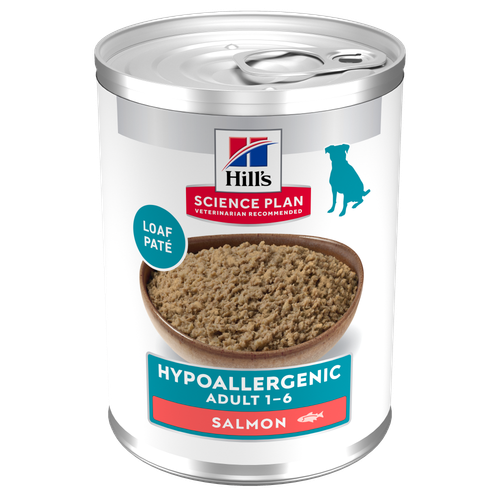
Hill's Science Plan Hypoallergenic Adult Wet Dog Food with Salmon is a complete premium pet food for all adult dogs from 1 year. This savoury tinned loaf is specially formulated for dogs with delicate skin and stomachs. It features a single novel animal protein source and is grain-free.

Hill's Science Plan Puppy Multipack Wet Dog Food with Chicken & Beef are complete premium pet foods for growing puppies from weaning until 1 year old and for pregnant and nursing dogs. Your puppy will love these deliciously smooth and savoury minced loaves, formulated for balanced nutrition and overall health.
Related articles

Learn effective tips for feeding a dog that's a picky eater and ensure proper nutrition for a finicky eater. Discover tips for pet parents at Hill's Pet UK.

How, when and what to feed your new puppy is an important decision, learn more about the things to consider for feeding your puppy.

Many human foods are dangerous to dogs. Read about 5 of the worst toxic food offenders that can kill your dog - and how much it takes to hurt them.

Learn about the potential health risks of a raw diet for dogs and why they aren't the best option for your pup or you.

Put your dog on a diet without them knowing
Our low calorie formula helps you control your dog's weight. It's packed with high-quality protein for building lean muscles, and made with purposeful ingredients for a flavourful, nutritious meal. Clinically proven antioxidants, Vitamin C+E, help promote a healthy immune system.
Put your dog on a diet without them knowing
Our low calorie formula helps you control your dog's weight. It's packed with high-quality protein for building lean muscles, and made with purposeful ingredients for a flavourful, nutritious meal. Clinically proven antioxidants, Vitamin C+E, help promote a healthy immune system.

